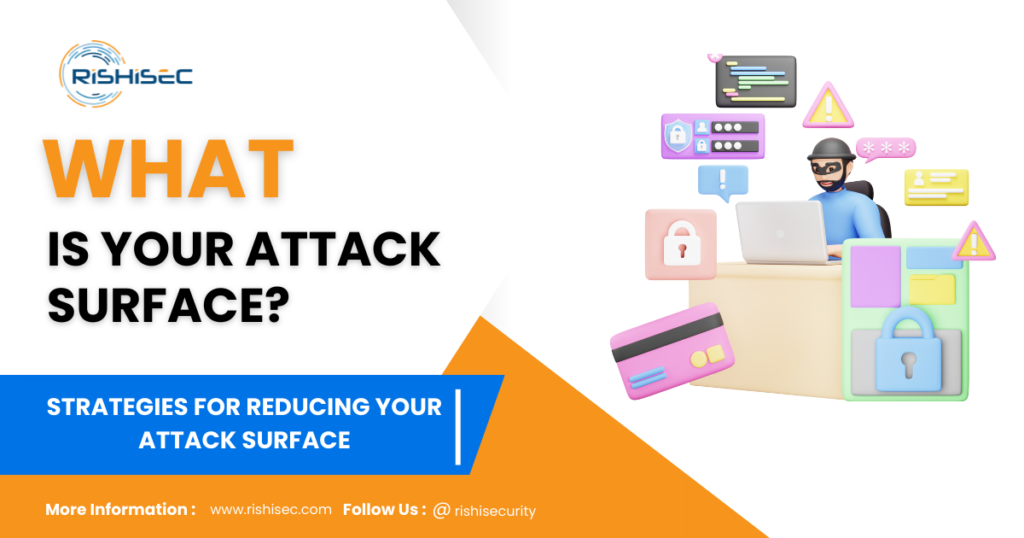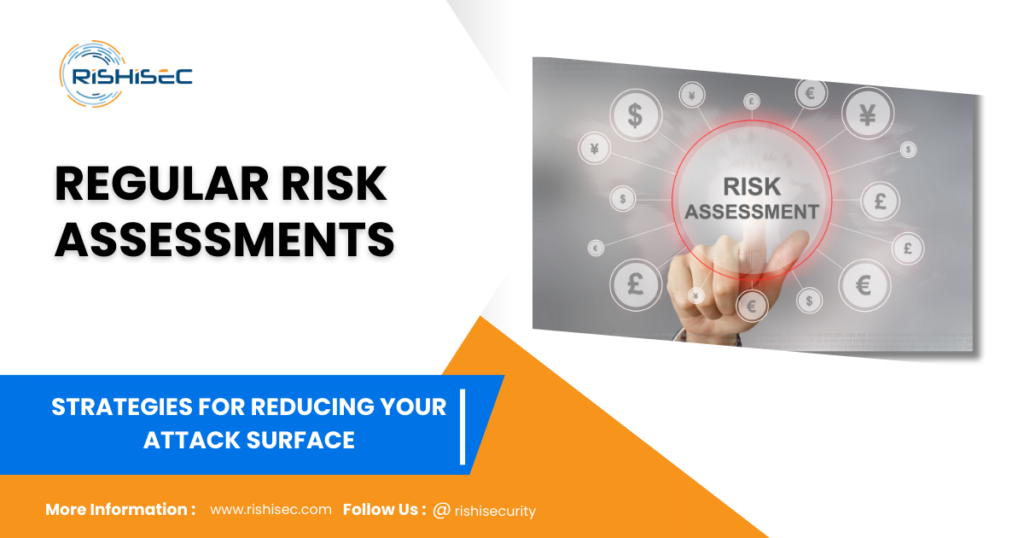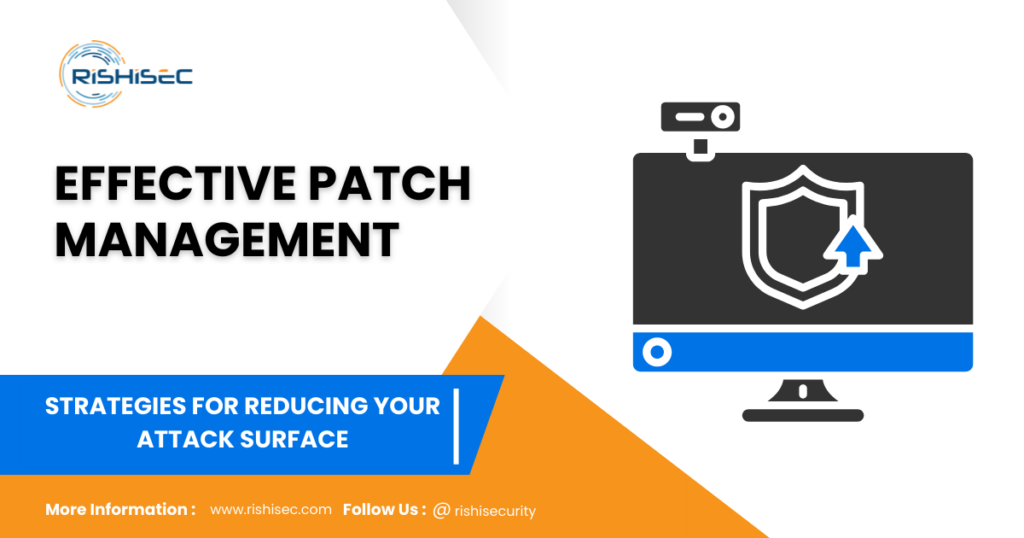Contents [hide]
- 1 Actionable Strategies for Reducing Your Attack Surface
- 2 What is Your Attack Surface?
- 3 Comprehensive Strategies for Attack Surface Reduction
- 4 Following are Actionable Strategies for Reducing Your Attack Surface
- 5 Conducting Assessments
- 6 Updating Risk Models using Actionable Strategies for Reducing Your Attack Surface
- 7 CTA
Actionable Strategies for Reducing Your Attack Surface
In today’s digital landscape, where cyber threats are more common and pervasive than ever, reducing your attack surface is not just a best practice but it’s a necessity. This detailed guide explores actionable strategies to minimize your attack surface, ensuring a robust defense against the ever-evolving threat landscape. So such actionable strategies for Reducing Your Attack Surface are necessary.
What is Your Attack Surface?

Tactical strategies for success
Your attack surface include all potential entry points that an attacker could exploit to gain unauthorized access to your systems. This includes network interfaces, application entry points, cloud services, and endpoints. A comprehensive understanding of your attack surface is the first critical step toward fortifying your cybersecurity measures.
Expanding the Concept: In addition to traditional entry points, consider the growing threat from Internet of Things (IoT) devices and third-party integrations. These often-overlooked areas can significantly expand your attack surface. Regularly reviewing and securing these components is essential to maintaining a strong defense.
Comprehensive Strategies for Attack Surface Reduction
Following are Actionable Strategies for Reducing Your Attack Surface
1. Automated Discovery and Continuous Monitoring
Automated Discovery: Automated tools play a pivotal role in identifying vulnerabilities within your network and applications. These tools continuously scan and detect potential weaknesses, allowing for timely treatment and by automating this process, you ensure that new vulnerabilities are quickly identified and addressed before they can be exploited.
Case in Point: For instance, consider a large enterprise that implemented an automated vulnerability scanner, which identified several critical issues in its legacy systems. By addressing these issues promptly, the organization prevented potential breaches and maintained its security posture.
Continuous Monitoring: Implementing a system for continuous monitoring is crucial for real-time threat detection. This involves constant surveillance of network traffic, user activities, and application behaviors to detect anomalies and potential threats. Real-time alerts enable rapid response, reducing the risk of successful attacks.
Practical Example: A financial institution that adopted continuous monitoring was able to detect unusual login attempts and thwart a potential breach, thanks to its proactive approach in analyzing and responding to real-time alerts.
2. Integration with Threat Intelligence
Threat Intelligence Feeds: Integrating threat intelligence feeds into your security infrastructure provides valuable insights into emerging threats and vulnerabilities. By incorporating threat intelligence, you can stay ahead of attackers and adjust your defenses based on the latest threat trends.
Adaptive Defense: Use threat intelligence to proactively adapt your security measures. This might involve updating firewall rules, configuring intrusion detection systems, and refining your incident response strategies to counteract the most recent threats effectively.
Example: A healthcare organization integrated threat intelligence into its security operations, which allowed it to identify and mitigate a zero-day vulnerability before it could be exploited, thereby protecting sensitive patient data.
3. Regular Risk Assessments

Conducting Assessments
Regular risk assessments are important to understand your current threats. These assessments help you find weaknesses, check how dangerous they are, and decide which ones to fix first based on risk levels. With this clear plan, you can focus your resources on solving the most critical problems.
Case Study: For example, a retail company that does quarterly risk assessments found several serious issues in its payment system. By focusing on the most urgent risks, the company put in specific security measures that stopped potential data breaches.
Updating Risk Models using Actionable Strategies for Reducing Your Attack Surface
You should also keep updating your risk models to account for new threats and changes in your system. If you don’t, your assessments may become outdated, and your security efforts won’t match the current risks.
Example: After a major software update, a tech firm adjusted its risk models to cover new weaknesses caused by the update. As a result, the company made sure its security measures were properly aligned with the new risks.
4. Implementing Zero Trust Architecture
Principle of Least Privilege:
The Zero Trust model follows the idea of giving users and devices only the access they need. This way, even if there is a breach, the damage will be limited since users and devices only have access to the essentials.
Continuous Verification:
Zero Trust also means you need to keep checking user identities and device health. Use multi-factor authentication, watch user behavior, and check devices often to make sure only trusted users and devices can access important resources.
Example: An enterprise that switched to Zero Trust found that it lowered its chances of both internal and external attacks. This success came from strictly verifying and monitoring all access requests.
5. Effective Patch Management

- Patch Management Process: A robust patch management process is essential for addressing known vulnerabilities. This involves regularly updating and patching software, operating systems, and applications to mitigate the risk of exploitation. Ensure that all patches are applied in a timely manner to close security gaps.
- Automated Patching: Implement automated patching solutions to streamline the update process. Automated tools ensure that patches are applied consistently and promptly, reducing the window of vulnerability.
- Case Study: A large organization that implemented automated patching discovered that it could maintain a more secure environment with fewer manual interventions and to reduce the risk of missed patches and potential exploits.
CTA
Ready to elevate your cybersecurity strategy and minimize your attack surface? Experience the benefits of SentryCA’s advanced security solutions with a free trial. Our tools offer comprehensive visibility, streamline vulnerability management, and fortify your defenses against evolving threats. Start your free trial today and discover how SentryCA can transform your approach to cybersecurity.


